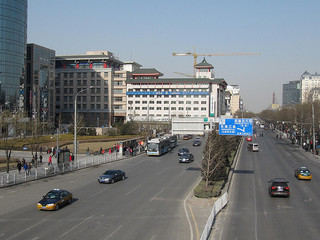 The rapid urbanization of China will propel it to become the world’s largest economy with 13 mega cities, four mega regions, and seven mega corridors by 2025, according to a new analysis by Frost & Sullivan.
The rapid urbanization of China will propel it to become the world’s largest economy with 13 mega cities, four mega regions, and seven mega corridors by 2025, according to a new analysis by Frost & Sullivan.
Mega Trends in China: Macro to Micro Implications of Mega Trends to 2025 said a strong urbanization rate, favorable corporate environment, huge infrastructure investment, and the largest working-age population will finally transform the country from a global manufacturing site to one of the biggest and largest consumer markets in the world 13 years from now.
By then, the nation will have a nominal GDP value of US$38 trillion, with the mega cities growing into major hubs for commercial and business activity and contributing nearly $6.24 trillion to the national GDP.
“By 2025, an estimated 921 million people or 65.4 percent of China’s population will live in cities, which is about 2.6 times of the United States’ total population,” said Archana Amarnath, program manager of the consultancy’s Visionary Innovation Research Group.
She added that the growth of Chinese mega cities will supplement Asia’s growing role as the world’s financial center. “In fact, by 2020, Hong Kong and Shanghai are expected to occupy two places in the top five global financial centers,” she said.
In addition to urbanization, the demographic composition of China will emerge as another key growth factor over the next decade. Its potential workforce will be one of the biggest with 922 million individuals in the working age (15-64 years) category in 2025, which is roughly 22 percent of the potential global workforce.
Accompanying the blistering pace of economic development is an ambitious investment plan boosting broadband infrastructure and mobile connectivity that will convert China into one of most connected economies in the world, Frost & Sullivan said.
“A connected China will also see about 7 billion of connected devices by 2025 ranging from mobile phones and gaming consoles to cars and televisions,” predicts Archana Amarnath. In the same year, China is expected to have 1.7 billion mobile phone subscribers and 791.7 million social networking users.
In a bid to support this growth momentum, the Chinese government has announced it is investing $2.73 trillion in fixed assets of infrastructure, such as power supply, railway, roads, urban public transport, water transport, water conservation, aviation, and telecommunications between 2011 and 2015.
With infrastructure support and a favorable corporate environment, industries such as logistics and retail will flourish over the next decade. The nation’s logistics industry is expected to become the world’s largest in 2016, and to hit the $1 trillion revenue mark by 2020. Retail sales, on the other hand, will hit $15.8 trillion in 2025, as China overtakes Japan as the second largest retail market in the world by 2015.
Photo: IvanWalshdotcom




